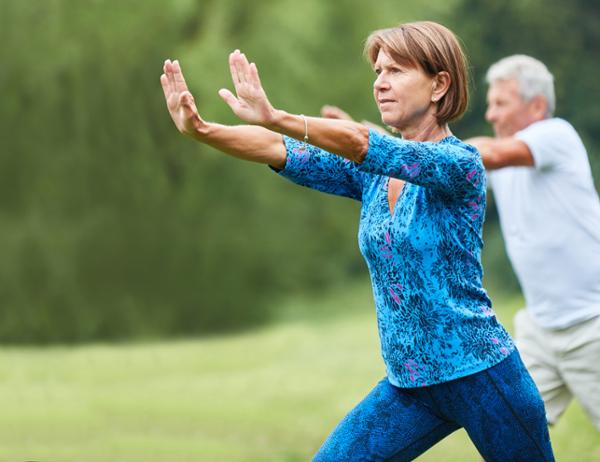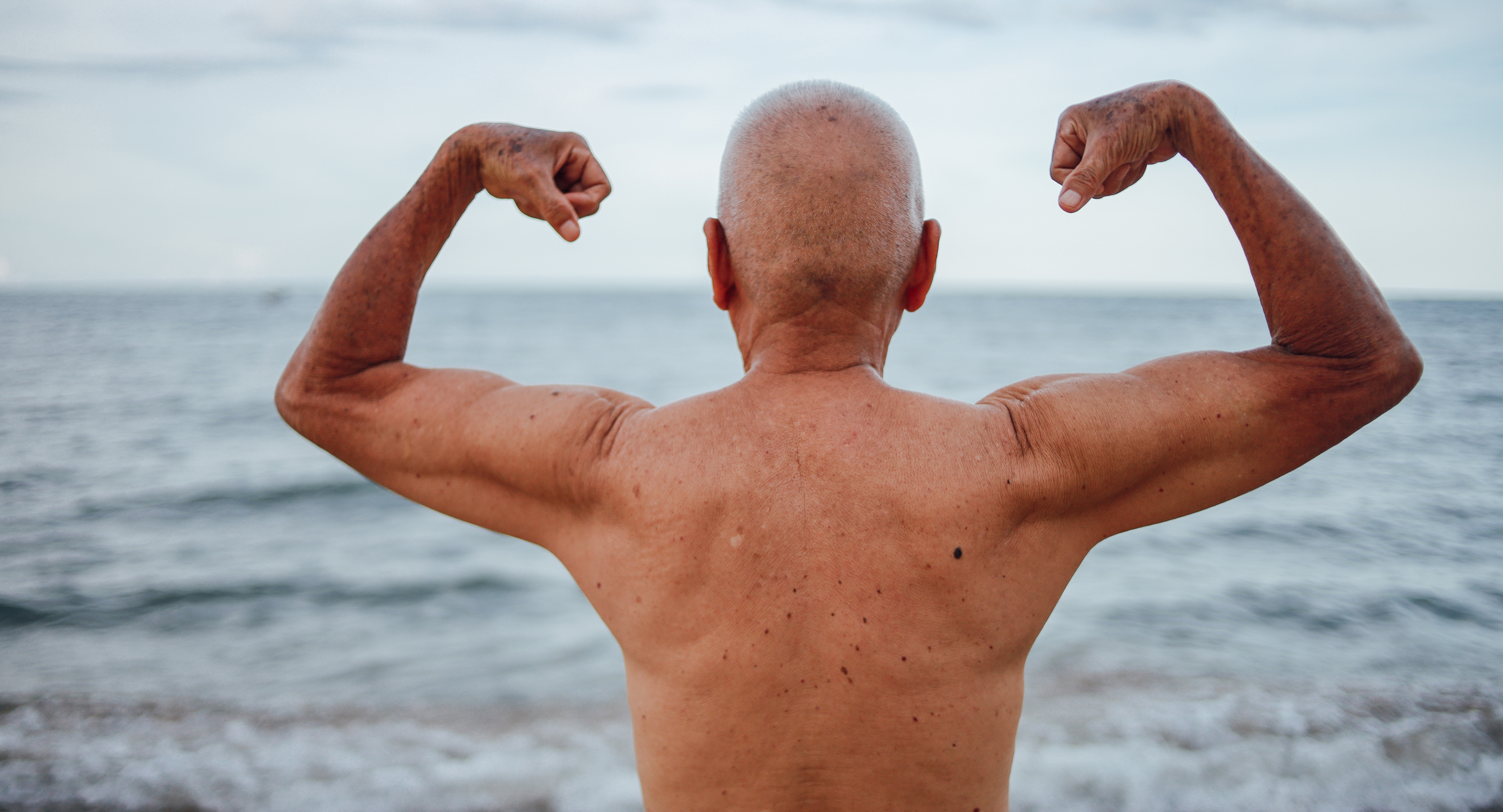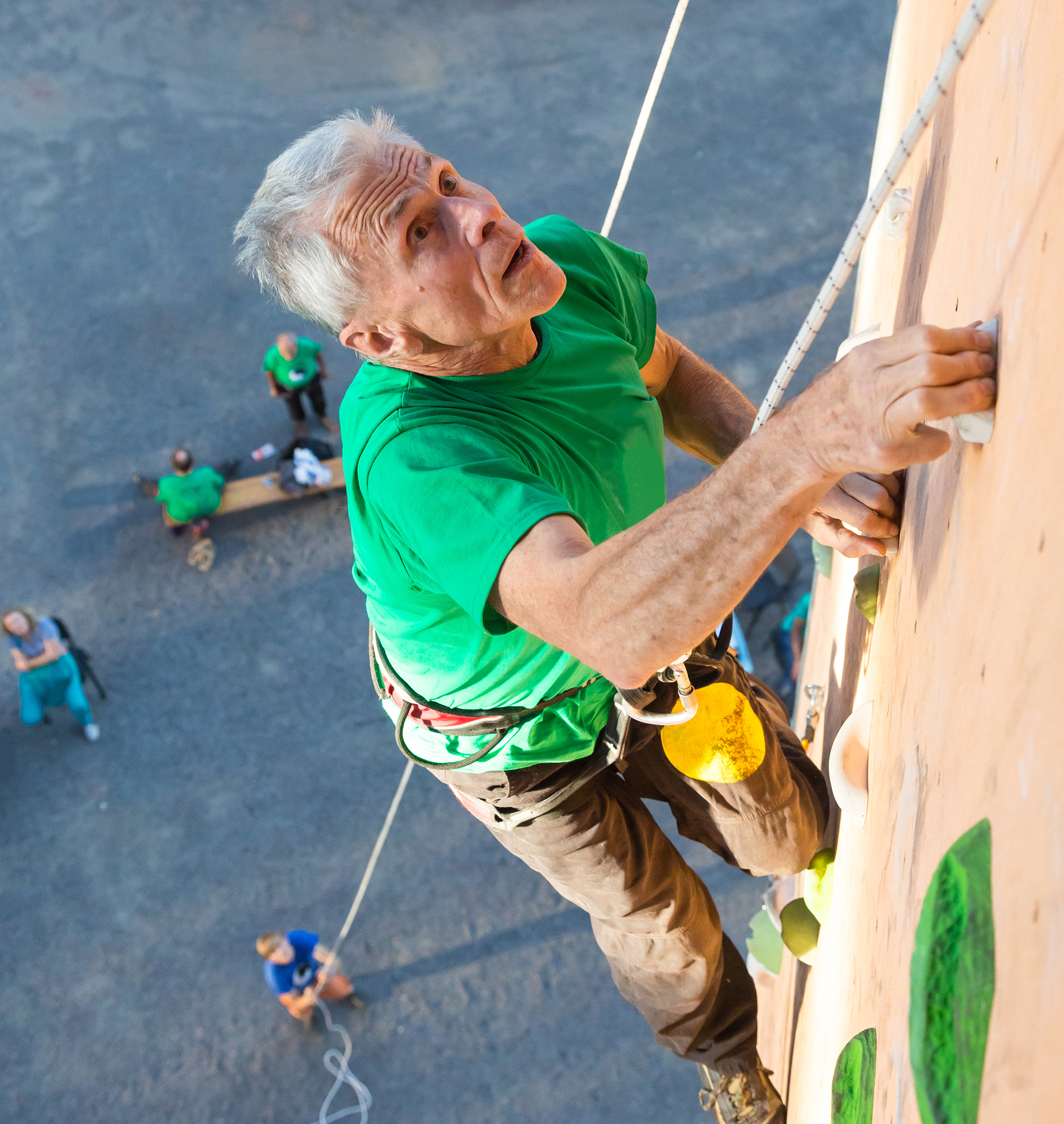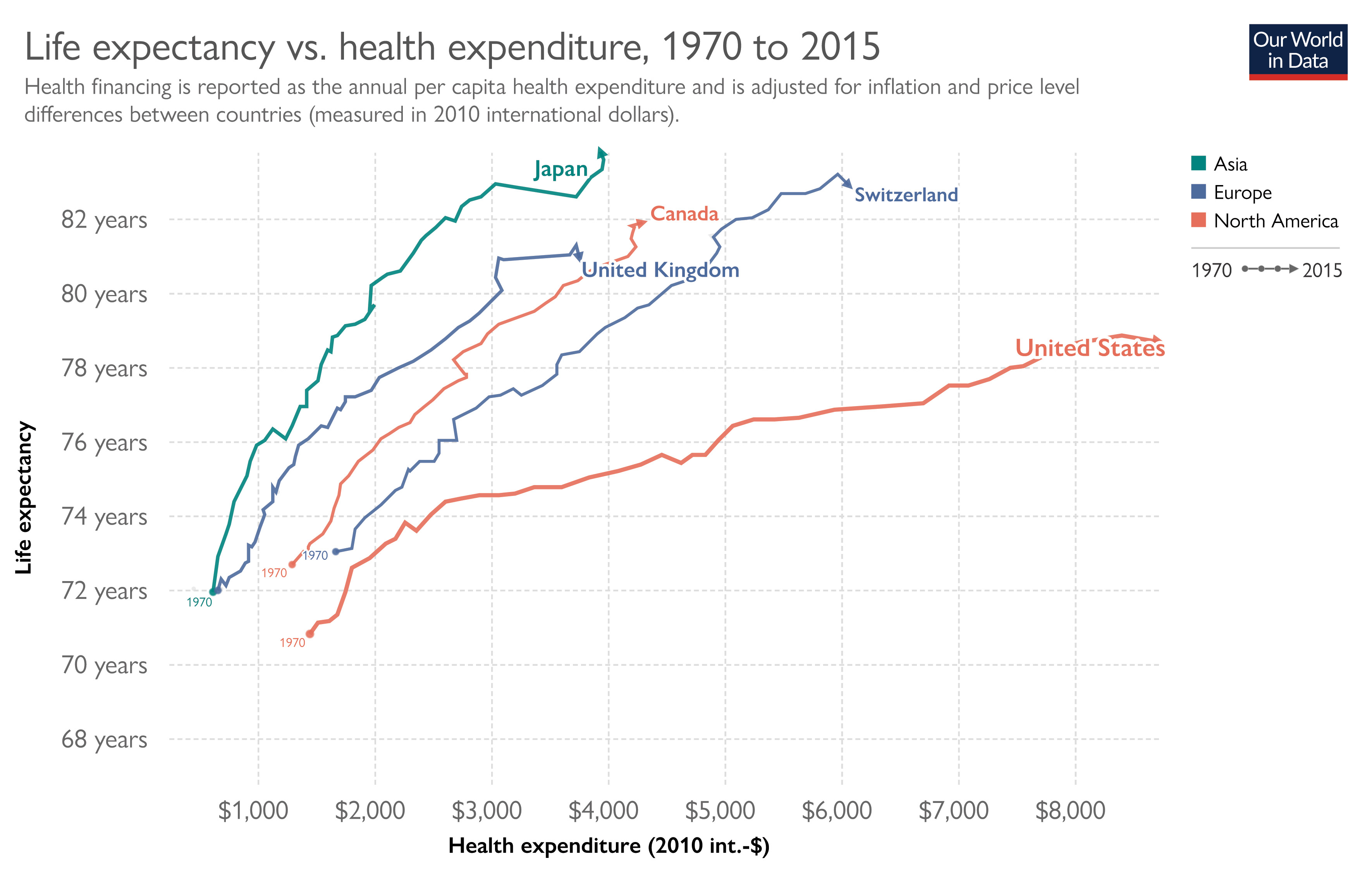features
Everyone's talking about: Life expectancy
Data from the World Bank and OECD shows how health spending across the world correlates with longevity. Kath Hudson looks at how this insight is driving new industry priorities

Figures from the World Bank and OECD for 1970 to 2015 (see page 52) show how health expenditure correlated with lifespan, indicating how effectively different nations are taking care of their citizens.
Political systems can present extreme challenges when it comes to delivering health equality, with the US currently lagging behind many other nations in terms of life expectancy at 78 years against Japan’s 84 – for example – as well as having experienced a dip between 2014 and 2018.
The US challenge goes back to the start of the dataset in 1970, with only Switzerland spending more per capita on healthcare (US$1600+) than the US at this time (US$1400+) for a vastly different population size, with Switzerland achieving a greater lifespan of c73 years for this expenditure vs c71 years for the US.
By 1982, the US had pulled clear of the field in terms of expenditure to US$2,500 per capital for a lifespan of 74 years while Spain, UK, Ireland and Portugal were the nations at this time achieving the greatest lifespan for the least health expenditure (72-76 years for US$500 - US$1000).
Life expectancy across the world continued to rise throughout the period, with spending by governments on healthcare also increasing. By 2015, governments were able to buy their citizens an extra 10 years of life by increasing annual health expenditure from US$900 to cUS$4,000 per capita, as this led to an increase in lifespan from c72 years to c82 years.
By 2015, the US had also gained outlier status for all the wrong reasons, as health expenditure had increased to around US$9,000 per person with average age remaining stubbornly at around 78 years against a large cohort of nations that sat in the 82-84 age bracket for far lesser levels of expenditure – average US$3,000. Nations achieving this in 2015 included Japan, France, Canada, Switzerland, Italy, France, Israel, Luxembourg and Norway.
The fitness industry is lobbying for this health expenditure/longevity data to be correlated with activity levels to create an evidence trail to show how lifestyle interventions can help reduce premature death, while also reducing health expenditure.
Even though some nations are doing better, the World Health Organization says no country has room for complacency. Its figures show 500 million people developing heart disease, obesity, diabetes or other non-communicable diseases (NCDs) attributable to physical inactivity, between 2020-2030, unless governments are successful in encouraging more physical activity.
People must be mobilised into activity, but how can we convince governments our sector is part of the solution? We ask the experts…

More money is spent on healthcare in the US when compared to other wealthy countries, but with vastly inferior outcomes (see interactive table on page 52).
Alarmingly, even before the pandemic, life expectancy in the US was falling, with an increase in ‘deaths of despair’ – a term coined by Nobel economist Angus Deaton and his wife, the economist Anne Case, to describe deaths by suicide, drug overdose and alcoholic liver disease.
One can say these deaths reflect a crisis of wellbeing among a wide segment of Americans.
Volumes have been written about what’s wrong with the US health system and its unsustainable costs to society – from its reliance on the for-profit healthcare market and employment-based coverage, to the focus on acute care versus primary care and prevention and disinvestments in its public health infrastructure.
These factors, combined with runaway drug prices, have made the US unprepared to deal with its ageing population, rising levels of chronic disease and declining mental health.
Unfortunately, the rise in chronic disease and mental health problems is a global phenomenon that goes with stressful modern living. Many live and work at a fast pace while not getting enough natural movement throughout the day. They consume too much processed food, sleep too little and cannot find time and energy to exercise consistently. We spend too little time in nature and too much time on our screens, yet find it harder to make meaningful connections.
If we continue along this path, no matter how much we spend on healthcare, we’re merely fixing what we have broken: our bodies and our minds.
The physical activity sector is uniquely positioned to help reverse this trend – to help us keep our bodies and minds healthy. With government funding and support, physical activity-related companies could expand their offerings to reach a wider target population, including seniors, low-income people, and those with disabilities and health conditions. They could help promote the concept of exercise as medicine – that exercise is integral to treating many chronic conditions – and partner with health professionals to deliver appropriate exercise programmes.
Operators could also help educate governments and increase consumer awareness that exercise not only supports physical health, but also brings mental health benefits, and offers the opportunity to find purpose and community. All of these investments would save public and private health spending over the long term.


The US spends more per capita on healthcare than other industrialised nations, yet US life expectancy is among the lowest (see table 1).
There are many factors which differentiate the American situation from the other countries it is being compared with.
Nutrition for one. A study published in the Journal of Nutrition in February 2022 examined the amount of energy, sodium, sugar, and saturated fat consumed by American adults as junk food. From two nationally-representative surveys of food intake in 10,000 US adults, junk food provided approximately half or more daily energy and food components in the diet of US adults.
Researchers have found junk foods, with their lack of micronutrients and harmful fats, can reduce neuroplasticity, the process that allows our brains to store our experiences as memories, and can cause obesity, diabetes and heart disease.
Access to healthcare according to ethnicity and race is another issue. As of November 2021, American Indian and Alaska Native, black and Latino people had all suffered from higher rates of hospitalisations and deaths related to COVID-19 compared with white people. The US Centers of Disease Control and Prevention says these inequities largely result from racial and ethnic minority populations’ inequitable access to healthcare.
Gender is also a significant factor in access to healthcare. Across the country, poor women still face significant challenges when it comes to getting the care they need. More than 16 million women lived in poverty in 2016; 21.4 percent of black women, 22.8 percent of Native women, 18.7 percent of Latina women, and 10.7 percent of Asian women.
The poverty rate for families with children headed by women is higher than those headed by men or those headed by married couples. This makes women particularly vulnerable to healthcare costs. To stay financially secure, women routinely forego needed care and may postpone diagnosis of a serious health problem or go without required treatment.
Pollution is another problem. Researchers from Columbia University’s Mailman School of Public Health examined heavy metal contamination of US drinking water and found that areas with higher proportions of Hispanic/Latino and American Indian/Alaskan Native residents were associated with significantly higher arsenic and uranium concentrations.
The December 2022 study also found that greater proportions of Black residents were associated with higher arsenic and uranium in regions where concentrations of these contaminants are high. These unsafe levels can cause health effects such as cancer, cardiovascular and respiratory disease, and affect brain development and kidney function.
Exercise could help. In addition to the well-known benefits of physical activity in reducing the risk of metabolic disorders such as heart disease, cancer, obesity and diabetes, there are well documented benefits to mental health from regular exercise. But, the deep structural issues of racial, gender, nutritional and environmental disadvantage mean that commercial fitness programmes remain largely out of reach for those most in need. Exercise can only be effective in helping to change the direction of the US curves in life expectancy and health expenditures once policies begin reversing embedded structural inequities.
Dr Gerard Bodeker is a public health researcher and academic specialising in lifespan wellness and integrative healthcare


When the World Health Organization launched the Global Action Plan on Physical Activity (GAPPA) 2018-2030, governments committed to encourage and support communities to be more physically active. They recognised that regular physical activity and sport is good for hearts, bodies, and minds, and helps to decrease a range of NCDs, which place an enormous economic toll on public health systems. As a result, a global pledge to increase physical activity by 15 per cent by 2030 was part of the commitment to carry out policy recommendations contained in GAPPA.
Five years on, data from 194 countries in The Global status report on physical activity 2022, revealed that while some gains have been made, progress is slow and uneven. Less than 50 per cent of countries have a national physical activity policy, of which less than 40 per cent are operational. Only 30 per cent of countries have national physical activity guidelines for all age groups.
While nearly all countries report a system for monitoring physical activity in adults, 75 per cent of countries monitor physical activity among adolescents and less than 30 per cent monitor physical activity in children under five. In policy areas that could encourage active and sustainable transport, just over 40 per cent of countries have road design standards which make walking and cycling safer.
WHO estimates the total cost of treating the predicted new cases of five NCDs and two mental health conditions due to being inactive, will cost around US$27bn annually. However, the actual cost is likely to be even higher, as this conservative data does not include other key diseases, injuries from falls which could be prevented, or the cost of physical inactivity on economic productivity.
In most countries, policy development and implementation must improve if global targets on activity are to be met. The health and wellness industry plays a critical role in supporting government efforts to increase participation in physical activity, particularly in those who are the least active. By deploying its proven marketing skills, the wellness industry can advocate and communicate the multiple benefits of increased physical activity.
Supporting the development of digital technologies which continue to promote physical activity beyond the walls of the club will also expand access.
The physical activity and wellness industries are also valuable supporters of national and community activities, such as mass community walks and initiatives like Parkrun. By enhancing and increasing their contribution to organising or sponsoring initiatives, the industry can create more inclusive, accessible opportunities for people to be active in ways they enjoy. Maximising the wellness sector’s investments and support will help connect the public and private sector, reinforce a joined-up approach and amplify the positive benefits of physical activity.
• All relevant government departments recognise their contribution to increasing physical activity and reinforce a joined-up approach
• Ensure physical activity is embedded in all relevant policies: facilitate implementation with simple tools and guidance and strengthen multi-sector training
• Establish national coordination mechanisms to provide direction and oversight of the national agenda on physical activity, including all stakeholders
• Ensure data systems are aligned and provide tracking of policy implementation, as well as participation levels
• Identify and secure sustainable funding and align with needs to ensure sustained national policy commitments
WHO and OECD’s report Step Up! Tackling the Burden of Insufficient Physical Activity in Europe recommends that 150 minutes of moderate-intensity exercise each week would prevent 11.5 million new cases of NCDs by 2050, including 3.8m cases of cardiovascular disease, 3.5m cases of depression, almost 1m cases of Type 2 diabetes and 400,000 cases of different cancers.
Germany, Italy and France have the greatest healthcare burden from inactivity.


Source: Data compiled from multiple sources by World Bank; Health Expenditure and Financing - OECDstat (2017) OurWorldInData.org/the-link-between-life-expectancy-and-health-spending-us-focus





































































